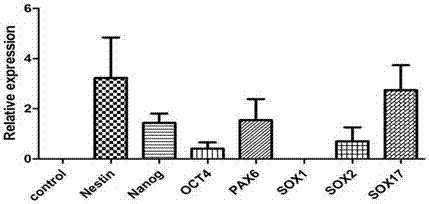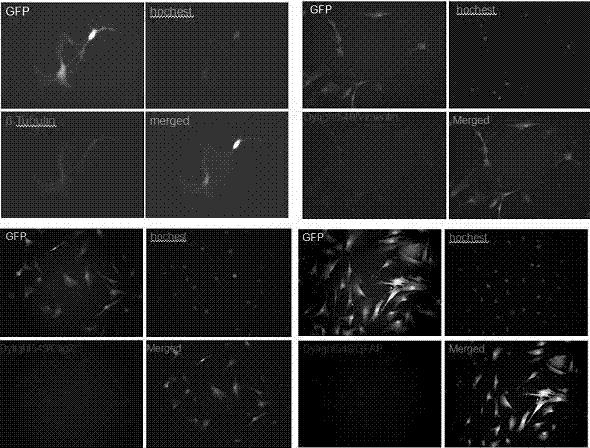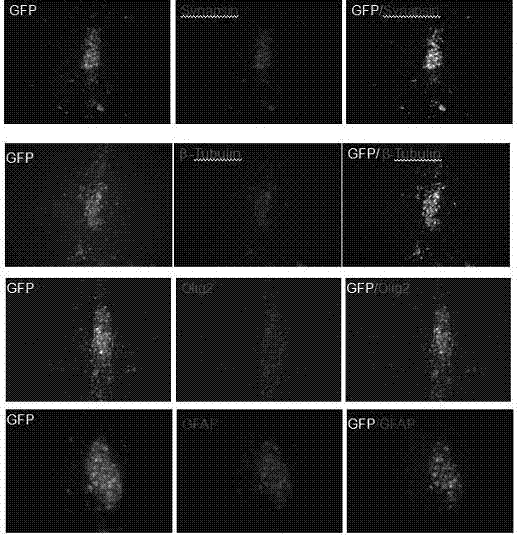Preparation method for reprogramming somatic cells into neural stem cells by microRNA, and application of neural stem cells
A neural stem cell and reprogramming technology, which is applied in the fields of biotechnology and neurodevelopment, can solve the problems of inability to be applied clinically in time, clinical safety hazards, and teratomas
- Summary
- Abstract
- Description
- Claims
- Application Information
AI Technical Summary
Problems solved by technology
Method used
Image
Examples
Embodiment 1
[0108] Example 1. Using reprogramming to obtain human neural stem cells from human adult foreskin fibroblasts
[0109] 1. Isolation and culture of skin fibroblasts:
[0110] The preparation method refers to the method of Ding et al. The foreskin discarded by circumcision was aseptically taken, placed in a petri dish filled with PBS solution, and washed twice to remove blood stains. Take it out and place it in a petri dish filled with PBS solution. Cut it into 1 mm3 fragments, transfer it to a centrifuge tube, add 0.25% trypsin, and place it in a 4°C refrigerator for overnight digestion. The next day, the culture medium containing fetal bovine serum was taken out and added to stop digestion and centrifugation to collect cells, and DMEF growth medium (high glucose DMEM, volume fraction 10% fetal bovine serum, 2mmol / L glutamine) was added to make a single cell suspension. Inoculate into culture flasks at a density of 4×104 cells / cm2, and incubate in an incubator at 37°C with a...
Embodiment 2
[0128] Example 2. Using reprogramming to obtain neural stem cells from mouse embryonic fibroblasts
[0129] 1. Isolation and cultivation of primary MEFs:
[0130] The preparation method refers to the method of McElroy SL et al. [12].
[0131] Pregnant mice of 13.5 days of pregnancy were killed by cervical dislocation and sterilized by immersing in 75% alcohol; the whole uterus was taken out, placed in a petri dish filled with PBS solution, washed three times to remove blood stains, transferred to a new petri dish, taken out For fetal mice, wash 3 times in a new petri dish; release the embryo, remove the head, tail, limbs and viscera of the embryo in turn, after washing 3 times, place the remaining body in a new petri dish, and cut the tissue with sterile scissors. Fully shred; add 0.25% trypsin-0.02% EDTA and gently pipette evenly, place in a 37°C carbon dioxide incubator and incubate for 10-20min, take it out every 5min and shake gently to make it fully digested; add fetal c...
PUM
 Login to View More
Login to View More Abstract
Description
Claims
Application Information
 Login to View More
Login to View More - R&D
- Intellectual Property
- Life Sciences
- Materials
- Tech Scout
- Unparalleled Data Quality
- Higher Quality Content
- 60% Fewer Hallucinations
Browse by: Latest US Patents, China's latest patents, Technical Efficacy Thesaurus, Application Domain, Technology Topic, Popular Technical Reports.
© 2025 PatSnap. All rights reserved.Legal|Privacy policy|Modern Slavery Act Transparency Statement|Sitemap|About US| Contact US: help@patsnap.com



